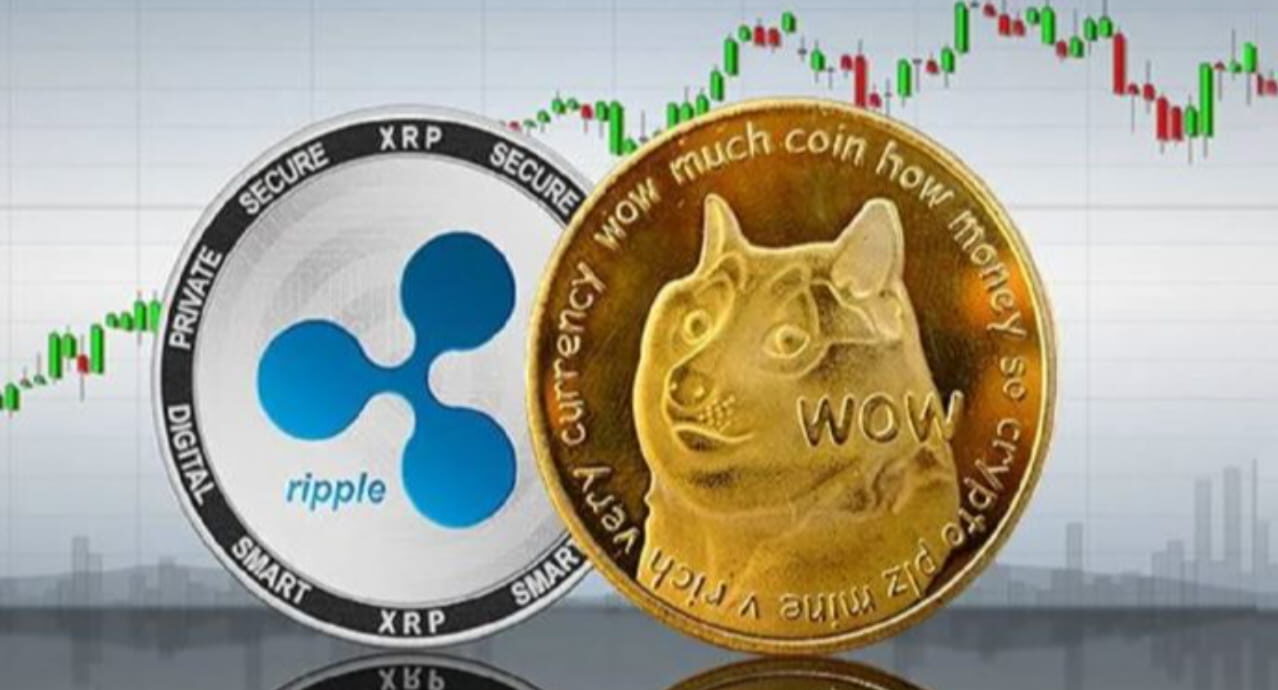Crypto Prices Drop After CPI Report Sparks Inflation Concerns

The cryptocurrency markets are once again in a rough patch. Following the release of the latest Consumer Price Index (CPI) data, the prices of major digital currencies, including Bitcoin (BTC), Ethereum (ETH), Dogecoin (DOGE), and XRP, fell sharply. The sudden rise in inflation has shocked both traditional and digital financial markets. Crypto market CPI impact, It has triggered a selloff of risk-on assets and raised concerns that the U.S. Federal Reserve will maintain a tight monetary policy for an extended period.
This essay examines the underlying reasons behind the current decline in cryptocurrency prices. It examines the macroeconomic implications of the CPI report, the shifting investor psychology, and how the tightening monetary environment is affecting the short- and long-term price trajectories of major cryptocurrencies.
CPI Data: A Key Macro Trigger
The U.S. Bureau of Labour Statistics publishes the Consumer Price Index every month. It is a fundamental measure of inflation in the U.S. economy. The most recent report showed that core inflation remains stubbornly high, contrary to what analysts had expected: a slight downward trend. People were worried right away that the Federal Reserve might delay lowering interest rates or even start tightening them again.
The crypto market, which has become a high-beta asset class intimately tied to macroeconomic variables, reacted quickly. Bitcoin, often referred to as “digital gold,” lost a few percentage points in just a few hours. Ethereum and other altcoins followed suit. The market’s sensitivity to inflationary data shows how deeply decentralized assets are tied to traditional monetary policy. This pattern has intensified as institutional capital began to flow into the space.
Bitcoin and Ethereum
As the most crucial cryptocurrency, Bitcoin often sets the direction for other cryptocurrencies. Following the release of the CPI, the price of BTC fell below key psychological support levels, and trading volume on major exchanges, including Coinbase, Binance, and Kraken, declined significantly. The price drop wasn’t just in spot markets; Bitcoin futures and options witnessed more liquidations as traders had to close out their leveraged positions.
Ethereum, the second-largest cryptocurrency by market capitalisation, followed a similar path to Bitcoin. The ETH/BTC ratio, a commonly used metric in the cryptocurrency world, has remained relatively stable, even as the price of ETH dropped. This means that the market moved in a way tied to the dip, not because Ethereum’s unique value proposition had changed. Nevertheless, Ethereum’s importance as the backbone of the DeFi and NFT ecosystems means that its price movements are a good indicator of how people feel about altcoins in general.
Dogecoin and XRP
Dogecoin and XRP were two of the altcoins that were hit the hardest. Although they serve different purposes, both have attracted a significant number of retail investors who are enthusiastic about them. Dogecoin was initially created as a meme coin, although it has experienced short bursts of popularity, thanks in part to the support of individuals like Elon Musk. Dogecoin Price Eyes, However, when the economy is struggling and people are less willing to take risks, speculative assets tend to perform worse, and DOGE was no exception.

XRP is Ripple Labs’ cryptocurrency, and it has a more business-like feel to it because it is used in cross-border payment systems and is currently being challenged by the U.S. Securities and Exchange Commission (SEC) in court. Although Ripple has won several recent court cases, XRP’s price movements remain tied mainly to broader market events and investors’ willingness to take risks. The CPI data appears to have overshadowed any positive news about XRP’s legal situation, causing its market capitalisation to drop sharply.
State of the economy: interest rates and risk sentiment
Over the past two years, a significant increase has been observed in the relationship between cryptocurrency assets and macroeconomic variables, including inflation, unemployment rates, and GDP. The Federal Open Market Committee (FOMC) is about to make judgments based on how long inflation remains high, and the possibility of higher interest rates for an extended period is weighing heavily on all markets, including the cryptocurrency market.
In the past, higher interest rates have strengthened the U.S. dollar, and government bonds have offered higher yields. This makes risky assets, such as bitcoin, less appealing. Additionally, institutional investors who invest in digital assets through funds or structured products tend to reduce their investments as monetary policy becomes tighter, which puts pressure on the sell side across the board.
Investor Psychology: Fear, Uncertainty, and Change
Changes in how investors perceive crypto prices can significantly impact the market. After the CPI was released, worry indicators like the Crypto Fear & Greed Index jumped into the “Extreme Fear” range. On-chain analytics platforms, such as Glassnode and IntoTheBlock. Also saw an increase in exchange inflows, indicating that investors are transferring assets from cold wallets to trading platforms. This is often a sign that more people are going to sell.
This emotional feedback loop worsens because crypto trading is open 24 hours a day, 7 days a week, and news spreads quickly, prompting immediate reactions. Many retail investors are in the cryptocurrency market, and they tend to respond to major news stories without considering them more seriously. This causes prices to fluctuate significantly.
When technical analysis meets fundamentals
Technical indicators for Bitcoin, Ethereum, and other major altcoins suggest that the market is currently in a downward trend. The Relative Strength Index (RSI) for BTC and ETH has fallen below 40. Daily charts indicate that moving averages are crossing over, which could signal that prices will continue to decline.
However, the story isn’t just about the technical aspects: the basic situation—rising inflation, uncertain Fed policy, and increased regulation. Scrutiny has made things very complicated, crypto market CPI impact, so even theoretically sound configurations. Can be thrown off by significant economic changes.
Market Trends and Insights from the Blockchain
Not only have the biggest cryptocurrencies fallen. But so have altcoins in several areas, including DeFi, Web3, and Layer 2 solutions. DefiLlama reports that the Total Value Locked (TVL) in DeFi protocols has decreased, indicating a decline in market participation. OpenSea and Blur, two NFT marketplaces, have also experienced a decline in volume, which aligns with the overall decrease in speculative activity.
On-chain analytics indicate that the number of active addresses and transaction volume on the network are decreasing, particularly for Ethereum. Long-term holders appear to be relatively unaffected, but short-term holders and leveraged traders have taken the worst hits from the sell-off.
Summary
Today’s drop is significant, but it’s vital to put it in the context of the crypto markets’ overall cyclical nature. In the past, Bitcoin and other major cryptocurrencies have experienced significant fluctuations. Back from macroeconomic-driven downturns, when it became clear what policies would be implemented. Altcoin Season, If inflation appears to be nearing its peak. The Fed hints at a dovish shift, and crypto assets could recover lost ground.
Traders and investors should get ready for further volatility in the immediate future. People who work in the market will be paying particular attention to impending economic indicators. Such as PCE (Personal Consumption Expenditures) data and comments from Fed Chair Jerome Powell. Risky assets, crypto market CPI impact, will likely remain fragile until monetary policy becomes clearer.
